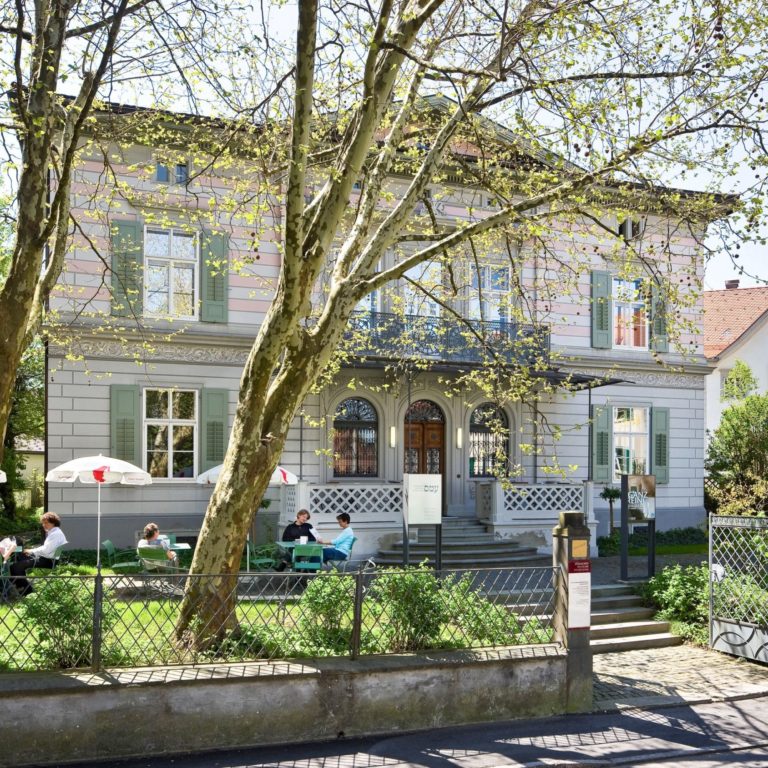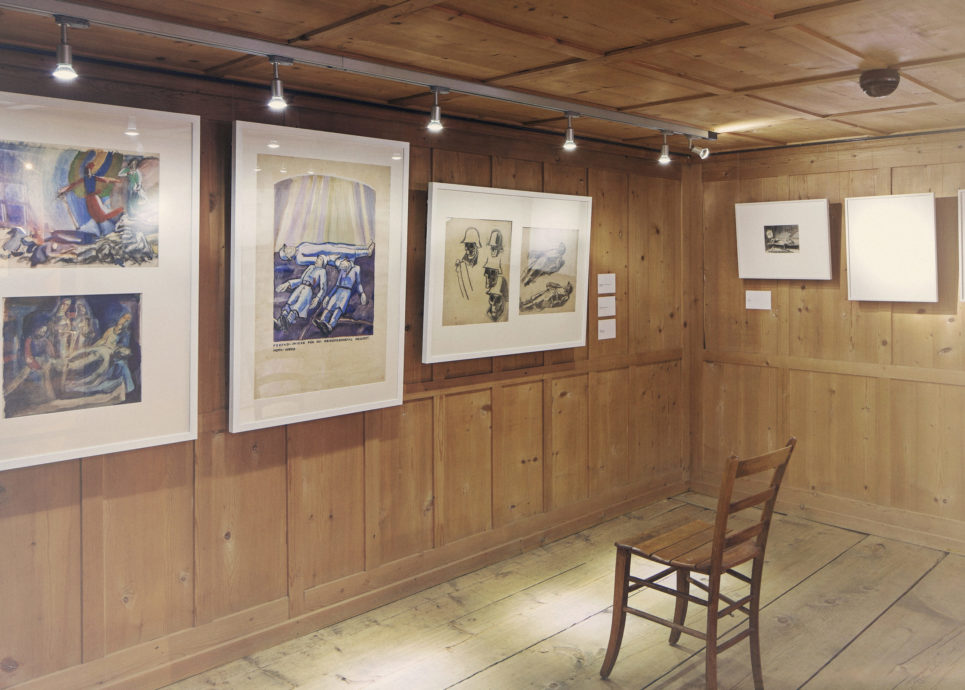Culture and Art in Vorarlberg: A delightful experience
Museums and exhibition spaces have always been part of Vorarlberg’s cultural landscape. Especially due to the changing special exhibitions, the rooms are attractive destinations to experience art and culture up close.
Date: 6 November 2019
With about 63 museums and around 391,000 inhabitants, Vorarlberg boasts an extraordinary density of museums, show rooms and exhibitions on a wide variety of themes and collections. In doing so, the museums offer a diverse educational programme also in winter: Changing special exhibitions and various events mostly complement the permanent exhibitions.
Among the most attractive museums and exhibition spaces are the renowned houses such as the vorarlberg museum in the city centre of Bregenz, the world-famous Kunsthaus Bregenz, the vai – Vorarlberger Architektur Institut or the Jewish Museum Hohenems. But also, smaller houses like Women’s Museum Hittisau, Angelika Kauffmann Museum Schwarzenberg, FIS Ski Museum Damüls, Werkraumhaus Andelsbuch and Lechmuseum in Lech am Arlberg are interesting places to discover history and many stories.
vorarlberg museum
The vorarlberg museum in Bregenz not only impresses with a permanent exhibition on cultural history and changing thematic exhibitions but also by its architectural design: 16,656 “blossoms” made from concrete imprints of commercial PET bottles adorn the façade of the museum. The new museum building, which integrates listed parts, was designed by the Vorarlberg firm of architects Andreas Cukrowicz and Anton Nachbaur.
The permanent exhibitions include “buchstäblich vorarlberg” (“literally vorarlberg”), “vorarlberg. a making-of” and „ganznah. Landläufige Geschichten vom Berühren“ (“up close. Stories about touching”). The current special exhibition is only open until 17 November and shows the “Mythos Idylle Maisäß. Künstlerresidenzen auf Montafoner Maisäßen 2016-2018”, in which a group of artists pursue various questions about the Maisäß in Montafon.
From 23 November, the following special exhibition “Reinhold Luger. Grafische Provokation” (“Rheinhold Luger. Graphic Provocation”) is dedicated to Vorarlberg’s graphic artist Reinhold “Nolde” Luger, who at the time was one of the leaders of the cultural protest movement in Vorarlberg. Later he designed timelessly beautiful posters for Bregenz Festival’s opera productions. Today he is also responsible for logos of towns and communities, for the design of city and country bus fleets and the typical steles at their stops. The exhibition is open until 13 April 2020.
Kunsthaus Bregenz
Designed by the renowned Swiss architect Peter Zumthor, Kunsthaus Bregenz (KUB) is one of Europe’s leading museums of contemporary art and has successfully established itself in the international art scene since its foundation. The programme features varying exhibitions with a dialogue between art, architecture and society, which artists usually design specifically for KUB.
Until 6 January 2020, the current exhibition at KUB is devoted to the German artist Raphaela Vogel. Raphaela Vogel combines sculpture and video, space and readymade. In her artworks, she conveys a physically tangible tension and a contrasting interplay of imagination and dimension.
vai – Vorarlberger Architektur Institut
Based in Dornbirn, vai sees itself as a platform for everyone involved in planning and building, and everyone interested in architecture. Throughout the year, vai hosts exhibitions and offers guided visits to outstanding buildings in Vorarlberg.
Until 15 February 2020, the exhibition “BASEhabitat | Architecture for Development” is currently on the programme. BASEhabitat is the studio of the University of Art in Linz, with which the university has been following a special path in architecture education for many years. With a strong focus on the social responsibility of architecture, it is dedicated to sustainable planning, building and spatial development in general, so far predominantly in the global South.
Jewish Museum Hohenems
For 27 years, the exhibition of the Jewish Museum Hohenems in the Villa Heimann-Rosenthal in the former Jewish quarter documents the history of the Jewish community from its very beginnings some 300 years ago to its end after 1938. The permanent exhibition, which was completely redesigned in 2007, presents areas of tension in Jewish life in the focus of an exemplarily narrated local history and its relationship space.
In the exhibition “Weiterdenken” (“Thinking Further”), 13 students from the University of Liechtenstein have intensively studied the city of Hohenems and its Jewish Museum in order to explore possible development perspectives for the museum and the urban space surrounding it. The exhibition is open until 17 November 2019.
From November 10 to April 13 2020, the exhibition “Ende der Zeitzeugenschaft” (“End of Contemporary Witnessry”) will question the “madeness” of contemporary witness interviews and their social role since 1945. It provides insights into the video collection of the Jewish Museum Hohenems, with interviews that have never been shown before.
Frauenmuseum Hittisau
The Frauenmuseum Hittisau (Women’s Museum Hittisau) is the only museum in Austria dedicated to showcase the creative work of women and dedicates its changing exhibitions to cultural history, contemporary art as well as to topical social issues. The museum is housed in a contemporary timber building in Hittisau in Bregenzerwald and won the Austrian Museum Award in 2017.
From 10 November, the current exhibition “Sie meinen es politisch! 100 Jahre Frauenwahlrecht in Österreich“ („100 Years of Women’s Voting Rights in Austria”) provides insights into women’s struggles for political co-determination – from the French Revolution to the recent past. The exhibition is open until 10 May 2020.
Angelika Kauffmann Museum Schwarzenberg
The Angelika Kauffmann Museum in Schwarzenberg, Bregenzerwald, consists of a modern and a historic part. Accommodated in the former residential quarters of an old Bregenzerwald timber house, the local museum permanently portrays the ways people used to live in 18th and early 19th centuries. In addition, the modern part of the museum features changing exhibitions.
“Who owns Bödele?“ asks the exhibition scheduled from 2 February to 19 April 2020. Bödele is a recreational area of the city of Dornbirn in the Rhine valley. Yet it is also part of the village of Schwarzenberg.
Vorarlberger FIS Ski Museum Damüls
The former vicarage of Damüls in Bregenzerwald accommodates a small museum dedicated to local and winter sports history. In the course of the renovation of the vicarage in 2017, the exhibition was also revised and received the official distinction “FIS Skimuseum Damüls” by the International Ski Federation (FIS).
The exhibition covers 130 years of skiing history as well as the history of ski racing in Vorarlberg. In the current special exhibition “Zweite Heimat – Damülser Stammgäste berichten” (“Second Home – Damüls’ regular guests tell”), guests talk about their intensive relationships with Damüls and its host families. The exhibition is open from 17 December to 20 April 2020.
Werkraumhaus Andelsbuch
In summer 2013, the Werkraumhaus opened its doors in the centre of Andelsbuch in Bregenzerwald. It was designed by the renowned Swiss architect Peter Zumthor and built by members of the Werkraum Bregenzerwald. The Werkraum Bregenzerwald was founded in 1999 and since then has been a platform for currently 90 master workshops from Bregenzerwald.
Until 11 January 2020, the exhibition “Gastbeben. Räume fürs Willkommensein” (“Gastgeben. Room(s) for Hospitality”), which deals with the question of what craftsmanship and hospitality have in common. A varied supporting programme for the exhibition, a shop and a restaurant with lunch complete the offer.
Lechmuseum in Lech am Arlberg
Built in 1590, the ”Huber-Hus“ invites visitors to discover how farmers used to live and work. The living room, chamber, kitchen and workshop of the Huber family take you back in time. In addition to the permanent exhibition, the living and working areas of the Huber family, Huber Hus also hosts an annual special exhibition.
Until 26 April 2020, “The Sound of Lech – Der Klang eines Ortes” explores the different sounds you come across in the village, from gurgling melting water to chirping marmots, all make you to listen closely. Another major theme is church bells.
Pictures & more information
- Click here for visual material
- Museen in Vorarlberg
- vorarlberg museum
- Kunsthaus Bregenz
- vai – Vorarlberger Architektur Institut
- Jüdisches Museum Hohenems
- Frauenmuseum Hittisau
- Angelika Kauffmann Museum Schwarzenberg
- Vorarlberger FIS Skimuseum Damüls
- Werkraumhaus Andelsbuch
- Lechmuseum in Lech am Arlberg






